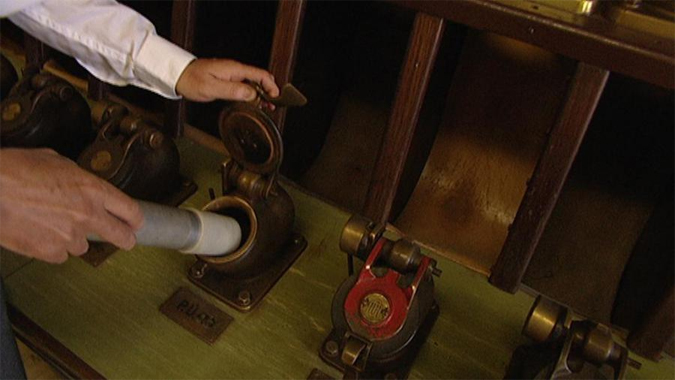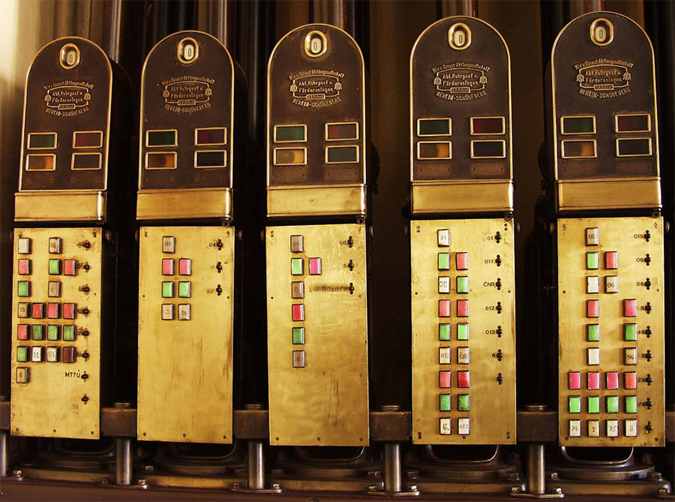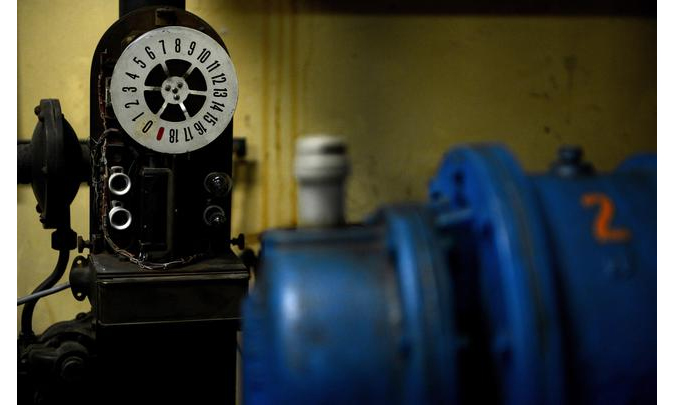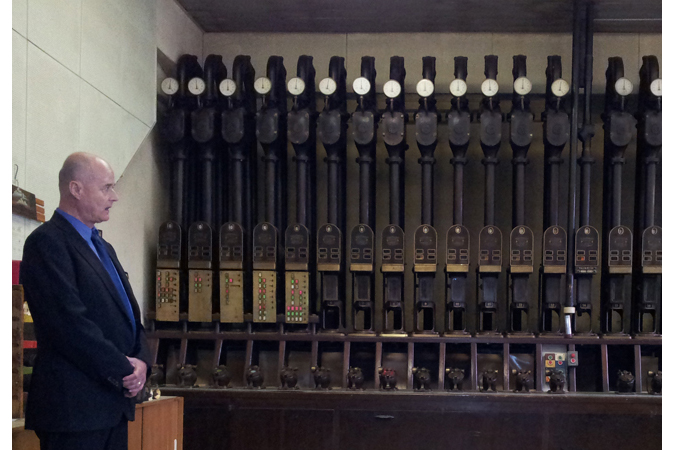These days, there are so many ways to communicate and send items, but how about this method of dispatching an object? Take it to the post office, where it will be inserted into a capsule resembling an artillery shell. The capsule is then dropped into a hatch, a clerk will press a button and, thanks to the laws of physics, the capsule will be forwarded to the addressee through an underground tube, by means of compressed air.
It may sound like a rather quirky arrangement, but such a system, known as pneumatic post or pneumatic mail, was still operating in Prague right up until the catastrophic August 2002 floods severely damaged it. But a buyer has plans to bring the pneumatic post in Prague (Pražská potrubní pošta), the last surviving system of its kind in the world, back to life.
PARTNER ARTICLE
Pneumatic capsule transportation, originally invented by Scottish engineer William Murdoch in the early 19th century, formed the basis for pneumatic post. With the invention in 1836 of a capsule, which could travel through the pipelines, the idea of pneumatic post became a reality. Cylindrical containers are propelled through a tube network by means of compressed air or a partial vacuum. The capsule is put in at one end of the network and a blower starts the process off, moving the item through the pipe, with a vacuum at the destination. Unlike pipelines, used for transporting fluids, pneumatic systems are designed to transport solid, mainly small objects.

Pneumatic post was initially designed for transporting telegrams; later banks, government ministries, and post offices used it when they needed to dispatch small packages quickly and over relatively short areas, such as within a building, or, at the other end of the scale, over a city.
Pneumatic post developed into a quite complex means of communication, but modern technology and transport such as couriers have rendered it largely redundant in many areas. However, it is not totally dead. It remains a very useful tool in medical centers – blood for transfusions literally flows through tubes at Motol and other hospitals – and documents are transported around the Czech cabinet office using pneumatic post. In addition, banks still use pneumatic post to whizz money around buildings. In the early days of pneumatic transportation it was even proposed to transport people through tunnels.
Pneumatic post enjoyed its heyday at the end of the 19th century and the early years of the 20th century; in Europe, London, Paris, Berlin, and Vienna all operated municipal pneumatic post systems. In Prague, the network was established in 1887 and initially was internal only. The first lane joined the main post office on Jindřišská Street to the post office on Malostranské náměstí. Two years later, on March 4, 1889, the system spread, connecting other institutions, and later the first lane was extended to Prague Castle, making the network over 5 kilometres long; the total network ultimately amounted to 55 kilometers.

All the lanes converge on the main post office in a star shape, and therefore packages traveling from opposite ends of Prague all pass through the main post office. Coordination of the items is helped by a system of red, green or yellow lights by the end of each tube, indicating if a capsule is arriving, leaving, or travelling through the tube. The tubes themselves are mostly situated around 80 to 120cm underground and the pipes have a diameter of 65mm. The capsule can travel at a speed of up to 10 meters per second, generally measures 48mm wide, with a length of 200mm.
The Prague pneumatic post system enjoyed particular growth at the end of the 1920s and the boom years of the early 1930s, when thousands of cylinders were sent every month. During the Prague Uprising, from 5-8 May 1945, pneumatic post was used to communicate with the besieged Czech Radio headquarters on Vinohradská in the final days of World War Two.
It continued to be used in the postwar era, and remained in operation throughout the communist era, when it was mainly used to send telexes – under, of course, the ever beady eye of the Statní bezpečnost, the secret police. The 1970s were its heyday in terms of volume, with around 1 million items being sent.

The pneumatic post office system in Prague survived the changes of 1989 and continued operations into the 1990s, although on a diminished scale. It was owned by former state telecommunications company Český telecom and then O2 Telefónica when the former was privatized. Over 20 subscribers used the system, but it was becoming less and less commercially viable and more and more of an anachronism. A further blow was the 2002 floods, when 5 of the pneumatic post network’s 11 underground engine rooms ended up under water.
Despite this – or perhaps because of it – there has been no shortage of interest in acquiring the pneumatic post. It was purchased in 2011 “at the eleventh hour” by Czech entrepreneur Zdeněk Dražil, who had seen the Prague pneumatic post system for the first time 20 years ago and fell in love with its “beauty“ and “technical perfection“.
He confirmed that he was tyring to acquire funds to put at least one of the lanes back into operation, and he is currently looking for sponsors. The stretch between Jindřišska alone will cost around CZK 5 million to repair, he told the newspaper, adding that the part under Malostranské náměstí is under tramlines, causing complications.
Dražil also wants to show tourists the section of the network at Prague Castle. It’s part of the history of Prague Castle, and Japanese and American tourists would love it,” he told Mladá fronta Dnes.

Keeping the Prague pneumatic post system in operation would make it unique, because elsewhere all tube post systems have been closed down, and conservationists would like to award it protected status. The Prague pneumatic post network is also special because it has not been modernized since the 1920s, giving it a particular retro charm, although the maintenance crews will have their work cut out for them when parts need replacing.
Related articles












 Reading time: 5 minutes
Reading time: 5 minutes 



























